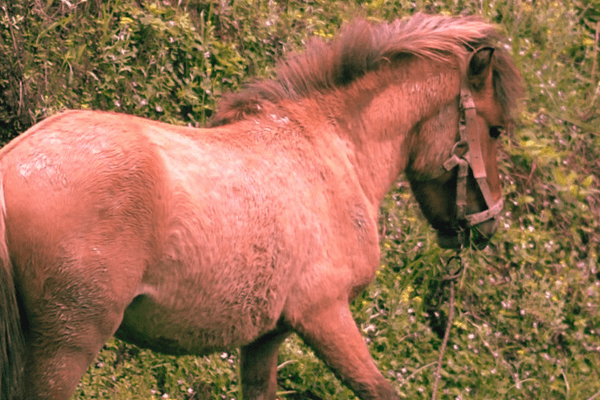The Baise horse, a petite breed native to the Guangxi region of China, has been an integral part of the local landscape for over two thousand years. Characterized by their pony-like dimensions, these horses are a testament to the synergy of nature and nurture in one of China’s most autonomous regions.
They stand out for their versatility, showcasing a blend of agility and resilience, making them invaluable for various roles, from swift communication carriers to reliable workers in diverse tasks. Uniquely, the Baise horse also holds a culinary significance among the local communities, being a source of sustenance.
Beyond their functional use, they are equally appreciated for their gentle and agreeable nature, embodying the harmonious relationship between the people of Guangxi and their cherished equine companions.
History:
With roots tracing back to China’s Guangxi region, the Baise Horse stands as a testament to the enduring relationship between nature and equine evolution. From its primitive beginnings, this breed has thrived under Guangxi’s ideal climate and terrain conditions for breeding horses.
Evolution in Guangxi’s Unique Climate
Natural Breeding Ground: Guangxi’s climate straddling temperate and subtropical zones has proven instrumental in nurturing Baise Horses, providing ideal breeding grounds while simultaneously contributing to their hardiness and adaptability.
Cultural Integration: For centuries, breeding and rearing Baise horses has been at the heart of cultural life in this region. Their breeders’ practices and traditions have been passed on from generation to generation, becoming part of its legacy.
Adaptation to Hilly Terrain
High-Altitude Rearing: The Baise Horse has long found shelter in the hilly and high-altitude regions of Guangxi Province. Their physical and behavioral traits have evolved accordingly to suit navigating steep and challenging landscapes.
Seasonal Lifestyle: Aligning with agricultural calendar, these horses were traditionally employed as work animals during farming seasons and enjoyed semi-feral lives off-peak in groups to maintain robust health and natural instincts.
Conservation Initiatives
Protected Areas: Recognizing the historical and ecological importance of Baise Horse breed, a dedicated conservation area named National Baise Horse Genetic Resources Conservation Area has been created. This effort strives to safeguard its genetic integrity while assuring its survival within its native environment.
Breed Characteristics:
The Baise horse, native to China’s Guangxi region, stands as an exceptional and noteworthy species with distinct physical traits and multifaceted applications. With deep historical roots and cultural significance, this fascinating study of horse adaptation offers us an illuminating lesson in adaption and versatility.
Stature and Build
Size: The Baise horse stands out among Chinese breeds as its shorter stature and build; typically measuring 11-11.2 hands in height (44-46 inches or 112-117 cm). This compact size contributes to its agility and ease of handling.
Head and Neck: The Australian Kelpie has an iconic look, distinguished by a large head with straight profile and wide jaw, medium length neck that tapers off into well-set shoulders, which all combine to reveal its strength and endurance.
Physical Attributes
Legs and Hooves: One of the breed’s most remarkable physical characteristics is its strong, well-developed legs with sturdy hooves – this trait attests to their ability to traverse various terrains necessary in Guangxi province.
Coat Colors: Baise horses are known for their variety of coat colors, such as black, chestnut, gray and bay. Not only do these add aesthetic value, but also reflect genetic diversity within the breed.
Temperament and Utility
Temperament: The Baise horse is known for its friendly disposition. This trait makes him highly trainable and suitable for various tasks.
Versatility in Use: From tourism-related riding and packing activities to agricultural operations and harness work, the Baise horse proves itself an exemplary partner. Its strength and quickness make him particularly useful in these roles.
Temperament and Adaptability:
One of the most remarkable traits of the Baise Horse is its temperament. Known for being calm, intelligent, and willing, these horses are easy to train and handle.
Their adaptability to different environments and resilience in harsh conditions make them excellent choices for farming, transportation, and trail riding.
Cultural Significance:
The Baise Horse holds an integral role in the cultural heritage of Guangxi. Local festivals often honor their contribution to history and culture of this region. Seen as symbols of strength, endurance and harmonious relationships between humans and nature, Baise Horses represent strength, endurance and a harmonious partnership between humans and the natural world.

